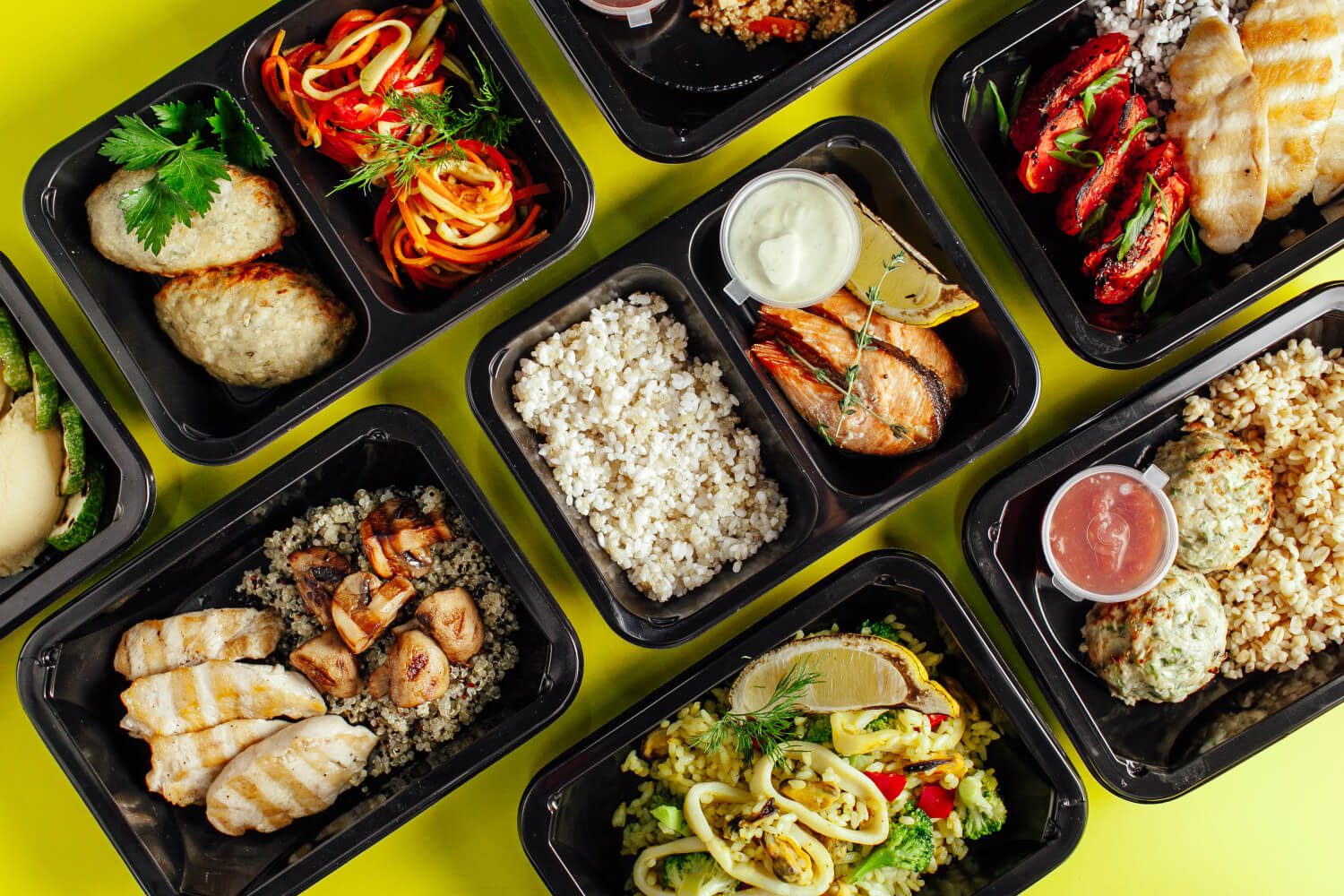So, you’ve jumped on the Factor Meals bandwagon, and who could blame you? These convenient, nutritious, and downright delicious meals are a game-changer for busy folks. But here’s the real head-scratcher: can you freeze Factor Meals without compromising their quality? Buckle up, my fellow food enthusiasts, because we’re about to embark on a culinary adventure into the world of freezing Factor Meals.
What Are Factor Meals?
Before we dive headfirst into the frosty waters of freezing, let’s get the basics straight. Factor Meals are those culinary wonders crafted by skilled chefs. These aren’t your run-of-the-mill microwave meals; these are carefully curated, nutrient-packed goodies that land right on your doorstep, saving you precious time and keeping your taste buds happy.
Can You Freeze Factor Meals?
The burning question on everyone’s minds: can you actually freeze Factor Meals? The answer is a resounding yes! But, like all great mysteries, there’s more to the story. Here’s the lowdown.
Proper Storage is Key: The first step in freezing Factor Meals like a pro is to strip them of their packaging. Say goodbye to those trays or wraps and give your meal a new home in an airtight container or snugly fitting freezer bag. This VIP treatment will help shield your meal from the dreaded freezer burn and maintain its pristine condition.
Not All Heroes Freeze Equally: Let’s set the record straight; not all Factor Meals are born equal in the freezing department. Some, with their delicate greens or saucy goodness, might not take too kindly to the chilly embrace of the freezer. You know the drill: when in doubt, check the packaging or reach out to the folks at Factor Meals for guidance.
How To Freeze Factor Meals
So, you’re ready to take the plunge and freeze your Factor Meals. Fantastic! But there’s a method to this madness. Here’s your step-by-step guide to ensure your frozen meals come out victorious:
1. Unpack and Label: Ditch the original packaging and pop your meal into a container or freezer bag. Don’t forget to label it with the meal’s name and its icy transformation date. Organization is your ally.
2. Make Space: Leave some breathing room at the top of your container or bag. The meal needs space to expand as it freezes, and you don’t want your container to burst with excitement.
3. Off to the Freezer: March your neatly packed Factor Meal to the freezer. Give it a nice spot where it can chill—literally.
4. Thawing Time: When you’re ready to indulge in your frozen treasure, take it out of the freezer and let it thaw in the refrigerator. This isn’t a rapid process; it takes time, usually several hours. Patience is a virtue.
5. Heat It Up: Once your meal has gracefully thawed, it’s showtime! You can reheat it in the microwave or the oven, following the instructions on the packaging. Remember, 165°F (74°C) is the magic number for safety.
Pro Tips for Freezing Factor Meals
Let’s take it up a notch with some insider tips for freezing Factor Meals like a seasoned pro:
- Freeze meals pronto: The faster you freeze them after receiving them, the fresher they’ll be.
- No double dipping: Once a meal has thawed, it’s all about eating it within a couple of days. No going back to the freezer, folks.
- Divide and conquer: Portion out meals before freezing for easy access to single servings.
- Don’t overstuff: Give your meals some room to breathe in the container to avoid messes.
- Vacuum seal if you can: A vacuum sealer can suck out excess air and save your meal from freezer burn’s icy grip.
Benefits of Freezing Factor Meals
Why even bother with the freezing fuss, you ask? Well, there’s a treasure trove of benefits:
- Bye-Bye Food Waste: Freezing Factor Meals extends their shelf life, reducing food waste.
- Busy Bee Bliss: For those hectic schedules, frozen meals are a lifesaver. Quick and healthy, just what the doctor ordered.
- Money in the Bank: Buy in bulk, freeze away, and enjoy discounts galore.
The Freeze Factor: What to Keep in Mind
Freezing Factor Meals is a culinary game-changer, but there are caveats to consider:
- Texture and Flavor: Delicate greens and saucy concoctions may not fare well in the freezer.
- Check Your Freezer: Keep your freezer at a cool 0°F (-18°C), as recommended by the FDA.
- Safety First: Always follow food safety guidelines for freezing and thawing, from proper storage to labeling and heating.
Not All Factor Meals Are Freezer-Friendly
Here’s the real talk: not all Factor Meals are cut out for the icy adventures of freezing. Some ingredients, cooking methods, and packaging types are more freezer-friendly than others. In general, heartier meals with ingredients like rice, beans, and robust veggies tend to handle the cold embrace better. Those with dairy or eggs might undergo texture changes.
The best way to know if a particular Factor Meal is up for the freezing challenge is to give it a whirl. Freeze a small portion, thaw it, and assess the texture and flavor. If you’re uncertain, reach out to the Factor Meals team for their sage advice.
The Cold Truth: How Freezing Affects Factor Meals
Freezing can leave its mark on Factor Meals in a few ways, depending on the meal’s composition and preparation:
- Texture: Moisture-rich foods like soups can turn a tad grainy or mushy post-freezing. Crispy delights might lose their snap.
- Flavor: Freezing can sometimes dial down the flavor profile, making it a bit muted.
- Separation: Meals with sauces or dressings may separate, altering their texture and appearance.
- Nutritional Hit: Extended freezing can sometimes zap certain nutrients, like vitamin C.
But hey, before you write off freezing, know that many Factor Meals soldier on admirably through the chill. The secret sauce (pun intended) is in the details—ingredients, packaging, and, of course, your trusty freezer.
Freezing Unopened Factor Meals: A How-To Guide
Got a stash of unopened Factor Meals that need saving? Let’s break it down:
- Check the Date: First, make sure your meals are still within their “use by” date before freezing.
- Keep the Original Packaging: Factor Meals usually come in freezer-safe containers. Leave them be.
- Freezer Conditions: Ensure your freezer is set to the recommended 0°F (-18°C).
- Label and Date: If you’re feeling organized, label the meal with the freezing date.
- Into the Freezer: Pop those unopened meals into the freezer and let them chill in their cozy containers.
How Long Can You Keep Defrosted Factor Meals?
Once you’ve thawed your Factor Meals, it’s like a ticking clock. How long do they last? Generally, it’s safe to consume defrosted Factor Meals within 3-4 days.
Stash them in the fridge pronto after thawing, using a sealed container or bag to avoid mingling flavors. Don
‘t forget to label them with the thawing date for your sanity’s sake. And always ensure a thorough reheating to a sizzling 165°F (74°C) before you dig in.
The Art of Defrosting Factor Meals
Now that your Factor Meal is frozen, how do you defrost it for maximum deliciousness? Here are your options:
- Refrigerator Defrost: Let your meal thaw slowly in the fridge over the course of hours or even a day or two. This method is safe but requires patience.
- Cold Water Defrost: In a rush? Seal your meal in a plastic bag and dunk it in cold water. Change the water every 30 minutes until it’s thawed.
- Microwave Defrost: If time is of the essence, use the microwave’s defrost setting. Watch closely to avoid overheating, and cook immediately after thawing.
How to Reheat Factor Meals Like a Culinary Maestro
You’ve thawed your Factor Meal; now, it’s time for the grand finale: reheating. Choose your battlefield—microwave, oven, or stovetop—and follow the packaging’s instructions for a sizzling success. Ensure that your meal reaches that magical 165°F (74°C) internal temperature for the ultimate food safety.
Signs of a Bad Factor Meal
Now, let’s talk worst-case scenarios. How do you know if your Factor Meal has gone rogue? Keep an eye out for these red flags:
- Unpleasant Odor: If it smells off, sour, or downright funky, it’s time to say goodbye.
- Mold or Discoloration: Any green, black, or white spots, or unappetizing color changes, spell trouble.
- Texture Shift: Slimy, mushy, or gritty textures aren’t friendly indicators.
- Bloating or Leaking: A bloated or leaking package may signal spoilage.
- Off-Tasting: If it tastes strange or off, it’s time to part ways.
If you spot any of these signs, bid your Factor Meal farewell to avoid any culinary calamities.
Conclusion
So, there you have it, fellow culinary adventurers—your guide to freezing Factor Meals like a champ. Yes, you can freeze Factor Meals, but there’s an art to it. Proper storage, understanding your meal’s compatibility with freezing, and following safety guidelines are the keys to success.
Embrace the convenience, cut down on food waste, and enjoy your flavorful, frozen feasts. Factor Meals have never been more versatile, and with a few freezing tricks up your sleeve, you’ll have a freezer stocked with deliciousness ready to thaw and delight your taste buds.



